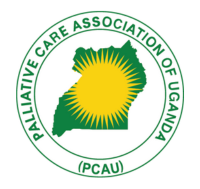Brief background to the challenge of cancer in children
Globally, it is estimated that 429,000 children and adolescents develop cancer annually, with almost 40% being from Africa. Uganda registers 1,500- 3,000 new child and adolescent cancers annually, with only about 30% presenting to the Uganda Cancer Institute (UCI). The most prevalent childhood cancers in Uganda include: Burkitt lymphoma, acute leukemia, Wilms tumor, and rhabdomyosarcoma.
Although most childhood cancers can be cured with appropriate treatment, the survival rate for childhood cancer in Uganda is around 20%-30%. Several challenges, including about 30% treatment abandonment, explain this state. Many families lack the transport and money to cover the related costs of treatment. Over 41 percent of Uganda’s population lives below the international poverty line.
The intervention of community cancer navigation
The Palliative Care Association of Uganda (PCAU) initiated the Special Hearts to Nurture Every Child (SHiNE Child) Program as a pioneering effort in community cancer navigation, aimed at addressing childhood cancer challenges with community support. The program thrives on a strong grassroots partnership among PCAU, Mbarara Regional Referral Hospital, Kitagata Hospital, and over 10 lower health facilities.

The program seeks to develop a community-based cancer navigation platform for children, tackling gaps in access, diagnosis, and follow-up care for those living in five under-served districts. Its most significant intervention is providing transportation for children and their caregivers from their homes to the hospital and back during treatment cycles. Additionally, the program focuses on capacity building for health workers, strengthening the integration of palliative care, and enhancing awareness, food and nutrition support, psychosocial support, cost of diagnosis and treatment support, capacity building for health workers at lower health facilities, and cancer prevention efforts.
How is the program implemented?
The program is implemented by a team of dedicated palliative care nurses working alongside volunteers in the region. Typically, the health workers at Health Centres II, III, and IV see patients before they are referred for specialized care. Therefore, it is understandable that the health workers at lower health facilities are familiar with the conditions that patients in the community face. In this program, these health workers play a vital role, as they refer patients to higher-level hospitals, maintain records, and follow up on care. As patients return to the community, the nurses stay in contact; they conduct community outreach and perform home visits. They maintain constant communication with the families. They keep records of treatment cycles and support caregivers by reminding them to adhere to treatment. They provide necessary transportation, information, and encouragement.
what are the achievements and lessons so far?

From May 2020 to December 31, 2024, a total of sixty-one children have been enrolled in the SHiNE Child Program. Only two of these children had been lost to follow-up due to the migration of their families. Otherwise, they would have been in their homes. A total of twelve children had achieved remissions, and a total of twenty-two children were still receiving treatment. Twenty-three children had passed away, and all families had received belief services by the program. Two had unknown outcomes, and several awaited diagnostic confirmations. The community navigation structures eased caregiver burden, reduced costs, and improved treatment adherence. However, ongoing challenges included inadequate post-treatment nutrition, disrupted education, and persistent community stigma.
How can compassionate people support the program?
In communities where poverty casts a long shadow, the SHiNE Child Program becomes a lifeline, addressing not just physical ailments among the children but also the social isolation, stigma, injustice, and despair that families face daily. Your contribution, regardless of size, becomes a beacon of hope, lighting the path toward compassionate care for children and families in need in Uganda. Should you wish to contribute, please scan the QR Code below to give online or give through MTN MoMo Pay

Program Interventions
At the heart of the SHiNE Child Program interventions is the focus on the Child and their Family within their community and the surrounding environment. The program does the following:Care coordination, navigation, Referral pathway Support, Holistic Pain control, Food & Nutritional Support, Transport, Financial Assistance, Psychosocial Support, Patients & Caregivers Education, Health Workers Training, school fees support, medical supplies and sundries, costs for diagnosis, medicines, and Bereavement support.





